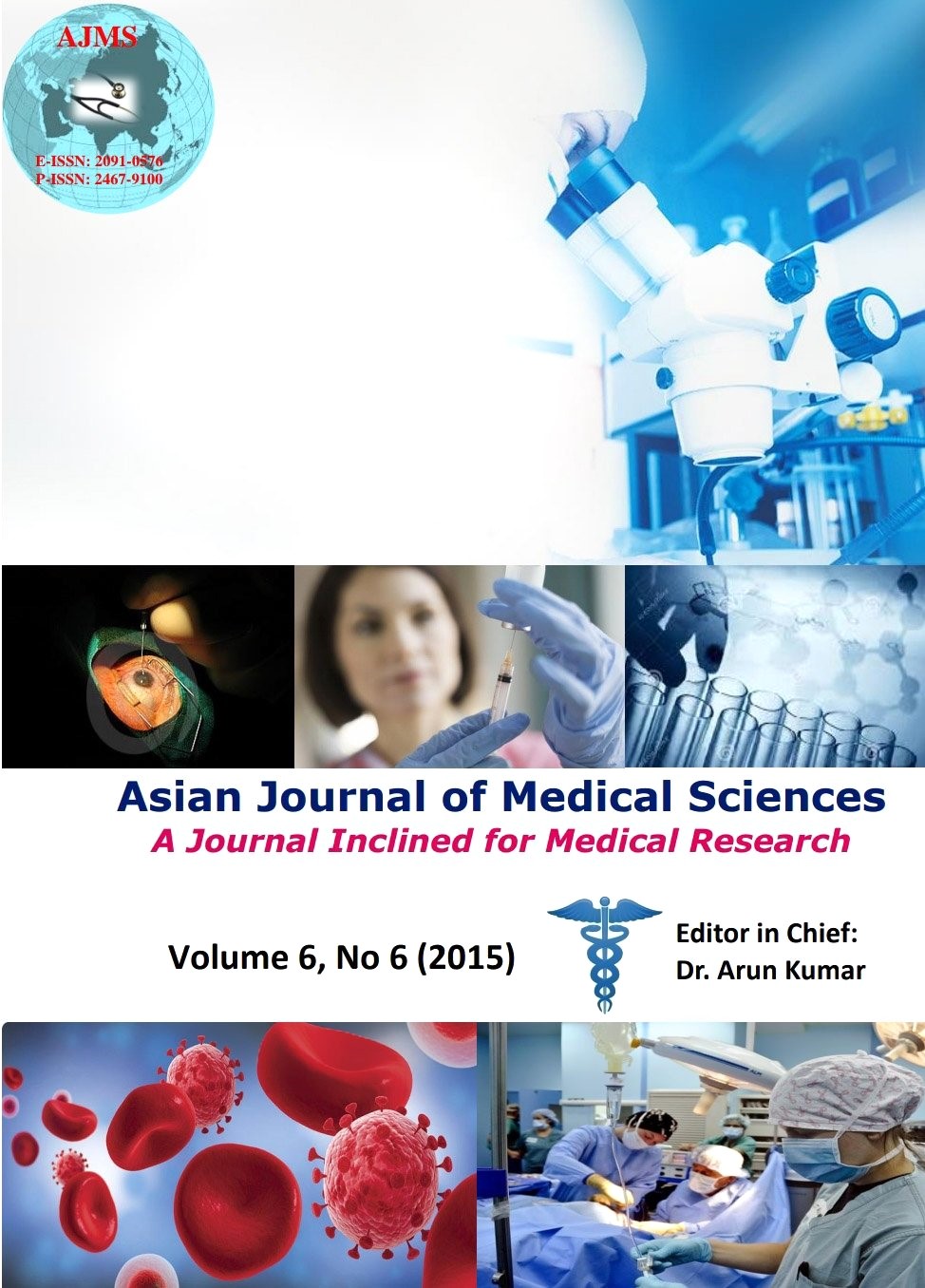Evaluation of dyslipidemia in type 2 diabetes mellitus
Keywords:
Type 2 Diabetes Mellitus, DyslipidemiaAbstract
Back ground: In type 2 diabetes mellitus lipid abnormalities are almost the rule. Dyslipidemia has been noted to play an integral role in the pathogenesis and progression of micro and macrovascular complications in diabetes mellitus patients. The complications exemplified by renal, cerebrovascular and cardiovascular disease cause the most morbidity and mortality in this group of patients.
Aims and Objectives: This study is aimed at understanding the pattern of dyslipidemia among type 2 diabetic patients.
Materials and Methods: During two month study period, total 100 patients with diabetes mellitus were evaluated for dyslipidemia. Plasma glucose was estimated by GOD –POD method and Lipid profile by photometry method. Lipid profile was evaluated by investigating the subjects for total cholesterol, serum triglyceride, high density lipoprotein, low density lipoprotein and very low density lipoprotein. In statistical analysis data were analyzed by using various statistical methods like percentage, proportions and tables by using epi info software.
Results: Out of 100 patients 72(72%) were males and 28(28%) were females. The mean fasting blood sugar of total patients with type 2 diabetes mellitus was 158.35mg/dl. in male diabetics, fasting blood sugar level with diabetes mellitus was 157.56mg/dl and in female diabetics it was 159.14mg/dl. The pattern of dyslipidemia in our study showed significantly higher levels of serum cholesterol, serum triglyceride, LDL-C in both male and female diabetics and lower levels of HDL-C in female diabetics. There was no significant difference in lipid profile pattern in male and female diabetic patients except lower levels of HDL-C in female diabetic patients.
Conclusion: This study showed that dyslipidemia is highly prevalent among type 2 diabetic patients.
DOI: http://dx.doi.org/10.3126/ajms.v6i6.12452
Asian Journal of Medical Sciences Vol.6(6) 2015 16-19
Downloads
Downloads
Published
How to Cite
Issue
Section
License
Authors who publish with this journal agree to the following terms:
- The journal holds copyright and publishes the work under a Creative Commons CC-BY-NC license that permits use, distribution and reprduction in any medium, provided the original work is properly cited and is not used for commercial purposes. The journal should be recognised as the original publisher of this work.
- Authors are able to enter into separate, additional contractual arrangements for the non-exclusive distribution of the journal's published version of the work (e.g., post it to an institutional repository or publish it in a book), with an acknowledgement of its initial publication in this journal.
- Authors are permitted and encouraged to post their work online (e.g., in institutional repositories or on their website) prior to and during the submission process, as it can lead to productive exchanges, as well as earlier and greater citation of published work (See The Effect of Open Access).




